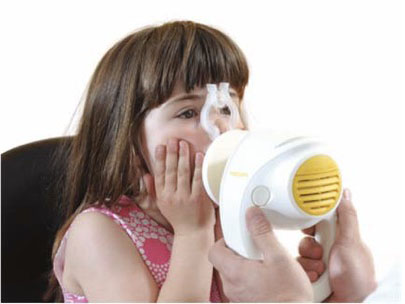Air pollution during pregnancy and children’s respiratory health in the SEPAGES cohort

The effects of personal exposure of pregnant women of the SEPAGES cohort on various pulmonary parameters assessed in infants and young children were investigated.
The oxidative potential of particles
Airborne particles, also known as PM (particulate matter), are generally classified according to their size: PM10 or PM2.5 for particles smaller than 10 or 2.5 microns in diameter respectively. Currently, air quality monitoring organizations track their mass concentration in the air, i.e. the mass of particles per unit volume of air. However, the health effects of particles depend on their physico-chemical properties, which are highly variable, since they can be influenced by emission sources. For example, one microgram of particles from sea spray will not have the same effect on health as one microgram of particles from a combustion source. The oxidative potential indicator is takes into account several physico-chemical properties of PM and their effects on health, since it mimics the oxidative pathway by which particles, once inhaled, affect numerous health parameters. This parameter is relatively recent. In the SEPAGES cohort, it was measured using the filters from individual dosimeters, MicroPeM, worn by cohort volunteers during pregnancy.
Objective measurements of lung function
At 6 weeks and 3 years of age, children in the SEPAGES cohort underwent a clinical examination, during which objective measurements of lung function were performed. At 6 weeks, parameters related to pulmonary flow and volume were measured by recording flow volume loop, and by the multiple nitrogen washout technique, both of which were performed during tidal ventilation when the child was asleep. At 3 years of age, the airwave oscillometry technique was used to assess lung mechanical properties.
Main results of the study
This study suggests deleterious effects of the oxidative potential of fine particles during pregnancy on lung growth in children. In particular, exposure to the oxidative potential of fine particles during pregnancy is associated with lower lung volumes at 6 weeks and altered lung mechanical properties at three years.
How can maternal exposure during pregnancy influence lung growth?
Several studies have shown that prenatal exposure to environmental pollutants affects in-utero growth, particularly organ growth. In addition, oxidative stress (which is a biological imbalance) can damage placental tissue, thereby affecting in-utero lung growth.
To go further:
Anouk Marsal, Rémy Slama, Sarah Lyon-Caen, Lucille Joanna S. Borlaza, Jean-Luc Jaffrezo, Anne Boudier, Sophie Darfeuil, Rhabira Elazzouzi, Yoann Gioria, Johanna Lepeule, Ryan Chartier, Isabelle Pin, Joane Quentin, Sam Bayat, Gaëlle Uzu, and Valérie Siroux the SEPAGES cohort study group ; « Prenatal Exposure to PM2.5 Oxidative Potential and Lung Function in Infants and Preschool- Age Children: A Prospective Study. » Environ. Health Perspect., 2023 January.
Read the article